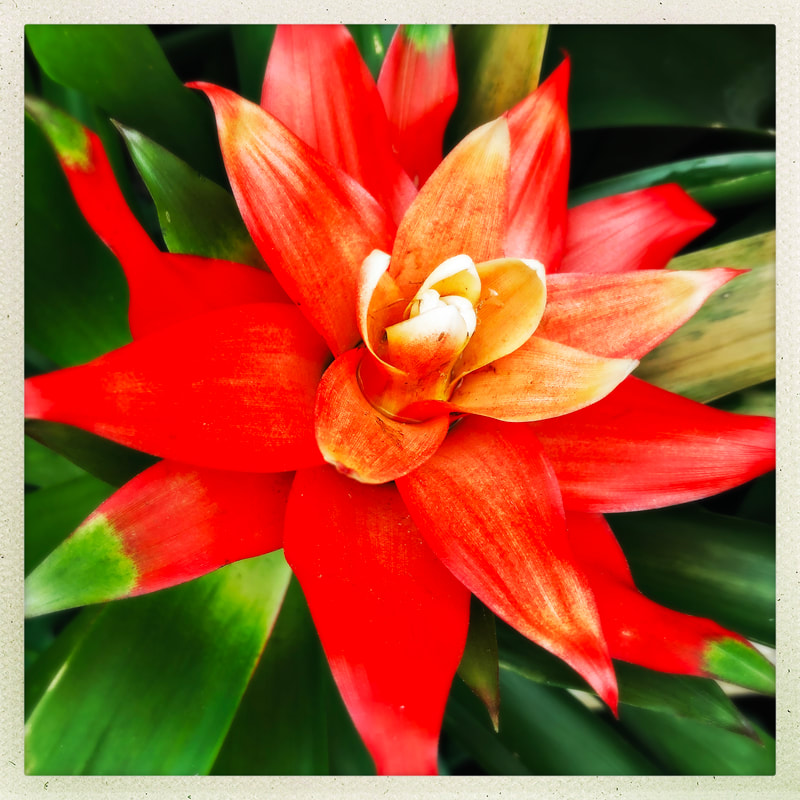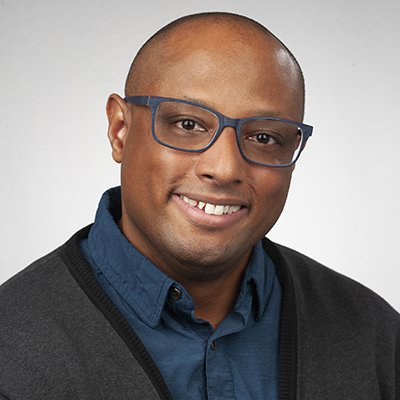ASSAY: A JOURNAL OF NONFICTION STUDIES
10.2
10.2
[Editor’s Note: “Normalizing Creative Writing Scholarship in the Classroom” is a reprint of a three-installment Assay project by Micah McCrary, who researched inclusive creative writing pedagogies in U.S. colleges & universities, originally published on Assay's blog. We are pleased to bring you this essential work in its entirety.]
|
__________
We're Going to Need More than ErasureIt has been several years now since Assay posted Marissa Landrigan’s “Teach This, Not That” (maybe from Dora Malech’s Kenyon Review post of the same name?) wherein Landrigan realizes her syllabi haven’t been as diverse as she may have once thought. Landrigan incorporates Yvette DeChavez’s idea that we should “decolonize” our syllabi—a call to pedagogical action about the kinds of texts instructors choose to include (and exclude) based on histories and patterns of institutional knowledge. But, in following only the suggestions of those like Landrigan and DeChavez, the act of syllabus revision risks becoming instructors’ own kind of politically- or pedagogically-justified version of exclusion, as they begin effacing the work of one author by replacing it with another’s.
While including traditionally marginalized authors is a necessary discussion in creative writing (CW) pedagogy, it doesn’t feel like a foundational concern at this point. Currently in the throes of dissertation-writing, I’ve often considered issues of inclusion in CW curricula, leading me to develop and teach a course (aiding my research) using Janelle Adsit’s “The writer and meta-knowledge about writing: threshold concepts in creative writing” (developed further as a chapter in her book Toward an Inclusive Creative Writing: Threshold Concepts to Guide the Literary Curriculum) as its foundation. This research has led me to believe that if CW instructors are willing to revise syllabi based on certain authors being deemed over-taught or problematic (Landrigan is careful to note there are plenty of white, male, cisgendered authors she’ll “miss dearly”) then this call to action must execute itself without a narrow focus. In other words, this call has potential for wide-reaching reform, which can work toward the benefit of CW programs and curricula holding inclusion and diversity in high regard. It’s not that a call for erasure is solely narrow. But merely replacing authors may be shortsighted in that it could fail to note that part of the problem is a subcultural insistence on propelling notions of what it means to be an author living the “writer’s life” (often already attached to markers of gender, race, and income) and how often this affects the opinions of student-authors early in their academic/creative careers. (Especially those who’ve chosen to embark on CW specifically by way of Academia.) It’s crucial that instructors look to broader notions of culture throughout creative writing, especially following the direction of writers and researchers like Adsit, like Claudia Rankine, like Katharine Haake, like Cristina Kirklighter, and Assay’s own Emma Howes & Christian Smith or Bernice M. Olivas, who all pose for instructors the questions they must ask about how to encounter a diversity of texts in their classrooms toward benefitting a diversity of students. Pedagogical joy can be found not just in revision/reform that creates room for voices hardly found in syllabi, but this can also be achieved by way of avoiding the privileging of craft. Adsit writes that any “analysis of craft must be grounded in an understanding of the varying orientations of readerships” (Adsit 310) while noting that “[d]iverse audiences come to their texts with diverse needs” (310). Numerous CW courses and programs talk about the “writer’s craft” in ways that connect to what’s also inherently problematized, in the English studies subfield of composition studies, as expressivism—writing, we’ve come to know over time and through detailed scholarship, operates not just within but beyond expression, however, recognized as also being socially mediated. This conversation is a chance to focus on representation, admitting that authors who are skilled and lucky enough to become published also create an imprint on the scene of U.S. literatures and cultures. I stopped to think about this a few weeks ago, when running into a professor and his toddler son in our department’s hallway: “Look, that’s Micah!” he said to his son. “That’s the future of American literature over there!” And while I took this in as a very kind, gestural joke it also got me thinking about the fact that numerous student-authors will become “the future of American literature”—with this being the case, CW instructors must do a better job in their classrooms of considering the image of these literatures as they become (re)presented not just to eager students, but also to readerships beyond U.S. borders who gain impressions of U.S. cultures through reading. One route I propose in trying to achieve more widespread cultural engagement is by aiming for a broad, comprehensive, and conceptual move toward not just the creative writing that instructors have students write and read in classrooms, but also the ways we instructors talk to student-authors about their own composing choices. This matter regards their reading and their writing, which can be informed by discussing (for example) authors who take trips to (an) African country/ies then reflect on those trips, or those discussing considerations of writing about an “other.” These reflections, when examined, may lead toward a more prominent research agenda for CW programs and curricula, beyond just the critical introductions informing master’s/MFA and doctoral projects. The readings I’ve discussed with my own student-authors, as magically influenced by Adsit’s work as well as Stephanie Vanderslice’s Rethinking Creative Writing in Higher Education: Programs and Practices that Work (both of which have remained foundational to my current research) have allowed us to discuss authors from Gloria Anzaldúa and James Baldwin and Alice Walker, to Jenny Boully, to Kristen Harmon, to Porochista Khakpour, to Leslie Marmon Silko, all of whom discuss aspects of representation that help widen the discussion of authorial practices and lives. We also discuss representations of authors in Hollywood films and what it means for an author to “find their own voice.” Other readings specifically discuss issues of language diversity (e.g., Christina Tang-Bernas’s “\’in-glish\”) or resources from composition studies like Vershawn Ashanti Young’s “Should Writer’s Use They Own English?” We also look into publishing practices and their effects on literary representation via Arifa Akbar and Roxane Gay, examining the ways they influence how and what students read—which in turn influences how and what student-authors write. We need greater openness towards a more foundational, fundamental overhaul of how (especially new) student-authors become exposed to the world of professional creative writing. While I don’t currently teach at a university where introductory creative writing courses are cross-genre, I think one way to go about this might be in examining these issues specifically within the multigenre CW course as an access point towards discussing identity, access, privilege, and representation in CW. Alternately, curricula may be designed to be split by genre (my current course design is titled Critical Concepts in Creative Writing: Nonfiction) so that the course may be treated as an introductory survey in critical readings on creative writing (which, for nonfiction, are taken from journals including Assay, TEXT, New Writing, and The Essay Review) and their literary counterparts, examining the present issues through lenses specific to the genres that are part of an instructor’s specialization. In teaching these texts, and in having these conversations with my own student-authors, I’ve been able to watch them develop a healthy conception of how creative writing may work both culturally and professionally—examining not just how it works inside and outside the college/university, but in communities directly informing (or impacted by) student-authors’ writing projects. These are the discussions I want to have with student-authors. I want to talk about authors’ choices not just being influenced by their style/voice but by their overall positionalities—and I also want to discuss how these choices can be refereed not just by what authors are willing to express but what, in some circumstances, they are or aren’t permitted to express. In all, this call-to-action looks a bit like CW more often and deliberately incorporating other fields like cultural studies or critical race studies into its curricula, the way these fields have already been incorporated into English/literary studies. Especially for those of us in literary nonfiction, who constantly engage with texts about others’ lives in addition to writing about our own, I call for a kind of mélange at all levels of CW throughout the Academy to work toward more transdisciplinarity so that perhaps the CW course I can become most comfortable teaching in the future may feel, in some ways, like an introduction to the field rather than merely its techniques. Where, instead of scene or POV we discuss with student-authors issues of privilege while acknowledging the diversity of bodies behind creative writing, making other aspects nuanced layers above new foundations. I want instructors to be willing to stick their hands in the mud a little more, to eventually build something that has not only become well-constructed but well thought-out, created through diligent conversation and research (a term I’ve come to understand creative writers may fear) so that our curricula are not designed in silos, but instead as part of a world that’s easily recognized as transnational. Where, after all, our ability to listen to someone 5,000 miles away can be as easily expected as our willingness to send them a DM or an e-mail from the same distance.
|
|
Robin Micah McCrary [he/him/his] is author of Island in the City (University of Nebraska Press), a memoir-in-essays. As Micah McCrary, his work also appears in Assay: A Journal of Nonfiction Studies, Essay Daily, and The Essay Review, among other publications. A contributing editor at Assay, Dr. McCrary lives on Haudenosaunee homelands, where he has researched diversity, equity, inclusion, and internationalization in creative writing pedagogies and has taught at Syracuse University.
|
Related Works
|
Jennifer Case
Carework in the Creative Nonfiction Classroom: Toward a Trauma-Informed Pedagogy Assay 9.2 (Spring 2023) |

